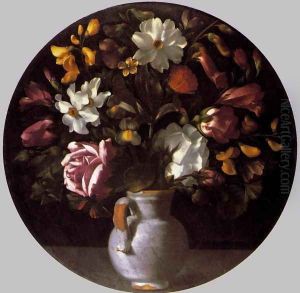Juan Fernandez Paintings
Juan Fernández was a Spanish painter, born in 1528, whose life and work are emblematic of the late Renaissance and early Baroque periods in Spain. His biography is less documented than some of his contemporaries, leading to a somewhat enigmatic legacy that has intrigued art historians for centuries.
Fernández's early life is shrouded in mystery, with little known about his training or influences. However, it is believed that he was active in the artistic circles of Seville, a city that was a vibrant cultural and artistic hub during his lifetime. This environment would have provided him with exposure to the works of Italian Renaissance artists as well as the burgeoning Mannerist style, both of which influenced his artistic development.
Throughout his career, Juan Fernández demonstrated a versatile skill set, working in both religious and secular themes. His religious works often reflected the intense spiritual fervor of the Counter-Reformation, showcasing dramatic expressions and dynamic compositions that sought to evoke an emotional response from the viewer. On the other hand, his secular paintings, which included portraits and mythological scenes, displayed a keen eye for detail and a profound understanding of human anatomy, likely influenced by his study of Italian Renaissance masters.
Fernández's contribution to Spanish art is noted for his mastery of light and shadow, a technique that would later influence the Spanish Baroque painters, including the famous Diego Velázquez. His ability to imbue his subjects with a sense of realism and vitality, while still adhering to the stylistic conventions of his time, marks him as a significant figure in the transition from the Renaissance to the Baroque period in Spain.
Despite his achievements, Juan Fernández did not gain the same level of fame as some of his contemporaries during his lifetime or posthumously. His death in 1611 marked the end of an era that bridged the gap between two significant periods in the history of art. Today, art historians continue to study his work, piecing together the life and legacy of this enigmatic artist, whose contributions to the Spanish Renaissance and early Baroque periods remain an important, though underappreciated, part of art history.



